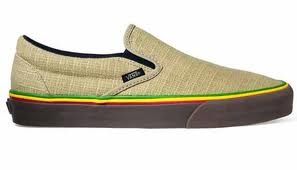DEFINITIONS and GENERAL INFORMATION ABOUT HEMP
HEALTH CANADA
Industrial hemp is a tall, leafy plant with a strong fibrous stalk. Although Industrial Hemp varieties are members of the cannabis plant family, they contain very low levels of the psychoactive ingredient THC (delta-9 tetrhydrocannobinol). Industrial Hemp plants contain 0.3% THC or less in their leaves and flowering parts.
Although the growth of industrial hemp crops was previously permitted for scientific research purposes, the first licence to grow industrial hemp for commercial purposes was issued in May 1998.
Fibre from stalks can be used in making paper, textiles, rope, twine, anc construction materials. Grain from industrial hemp can be used in food products, cosmetics, plastics and fuel. In other countries, industrial hemp has proven to be a hardy, fast growing, resilient and high yield crop. In Canada, industrial hemp has shown good potential as an alternative to be included in rotation with other, more traditional crops. It’s short growth period of 85 – 120 days, makes it well suited for cultivation in many parts of Canada. If planted at the proper time, it reportedly suppresses most weeds. Insect and disease problems must be managed like any other crop.
THE TRUTH ABOUT HEMP
From The Truth About Hemp – Hemp is a variation of cannabis sativa. It is the most useful plant known to mankind. In fact, cannabis sativa means useful (sativa) hemp (cannabis).
Hemp is used to make over 25,000 consumer products. From hemp apparel and accessories to house wares and hempseed oil cosmetics, hemp is an eco-shopper’s dream. Some of the products made are: clothing, shoes, diapers, rope, canvas, cellophane, paints, fuels, chain lubricants, biodegradable plastics,paper, fiberboard, cement blocks, food, cosmetics, and soap. Hemp is the longest and strongest natural fiber known to man.
HEMP PRODUCTION AROUND THE WORLD
The world-leading producer of hemp is China, with smaller production in Europe, Chile and North Korea. Over thirty countries produce industrial hemp, including Australia, Austria, Canada, Chile, China, Denmark, Egypt, Finland, France, Germany, Great Britain, Hungary, India, Italy, Japan, Korea, Netherlands, New Zealand, Poland, Portugal, Romania, Russia, Slovenia, Spain, Sweden, Switzerland, Thailand, Turkey and Ukraine.
UNITED STATES
Hemp is not legal to grow in the U.S. under Federal law because of its relation to marijuana, and any imported hemp products must meet a zero tolerance level. It is considered a controlled substance under the Controlled Substances Act (P.L. 91-513; 21 U.S.C. 801 et seq.). Some states have made the cultivation of industrial hemp legal, but these states — North Dakota, Hawaii, Kentucky, Maine, Maryland, Oregon, California, Montana, West Virginia and Vermont — have not yet begun to grow it because of resistance from the federal Drug Enforcement Administration. In 2013, after the legalization of marijuana in the state, several farmers in Colorado planted and harvested several acres of hemp, bringing in the first hemp crop in the United States in over half a century. Colorado, Vermont, California, and North Dakota have passed laws enabling hemp licensure. All four states are waiting for permission to grow hemp from the DEA. Currently,North Dakota representatives are pursuing legal measures to force DEA approval. Oregon has licensed industrial hemp as of August 2009.
HEMP PRODUCTS (in Photos)
RESOURCES:
http://www.hc-sc.gc.ca/hc-ps/consult/_2013/hemp-chanvre/index-eng.php
http://www.truthabouthemp.org/









